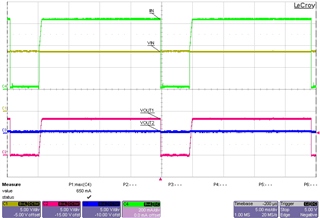Other Parts Discussed in Thread: TPS7B7702, TPS7B7702EVM
Hi Team,
I want to know about thermal performance for TPS7B7702-Q1. My input voltage is 13.5V and output is 8.5V. I want to understand what is the maximum DC current it could support.
My maximum ambient temperature is Tmax. Then the available power dissipation on LDO is (175-Tmax)/40.3. The power dissipation on single channel is 5V*IOUT=(175-Tmax)/40.3. So maximum output current is (175-Tmax)/201.5.
| Temp(C) | 25 | 45 | 65 | 85 | 105 |
| IOUT.MAX(mA) | 744.4 | 645.16 | 545.9 | 446.6 | 347.4 |

When temperature rise to 65C, TPS7B7702-Q1 could not support 300mA/channel when both channel is supplying same load. As Rja is based on JEDEC standard. The thermal performance will be different from EVM, which builds with heavier copper and stronger thermal dissipation. I want to know the Rja on EVM to evaluate how much maximum current TPS7B7702-Q1 could support. Could you please share some data? Thank you very much!
-A



